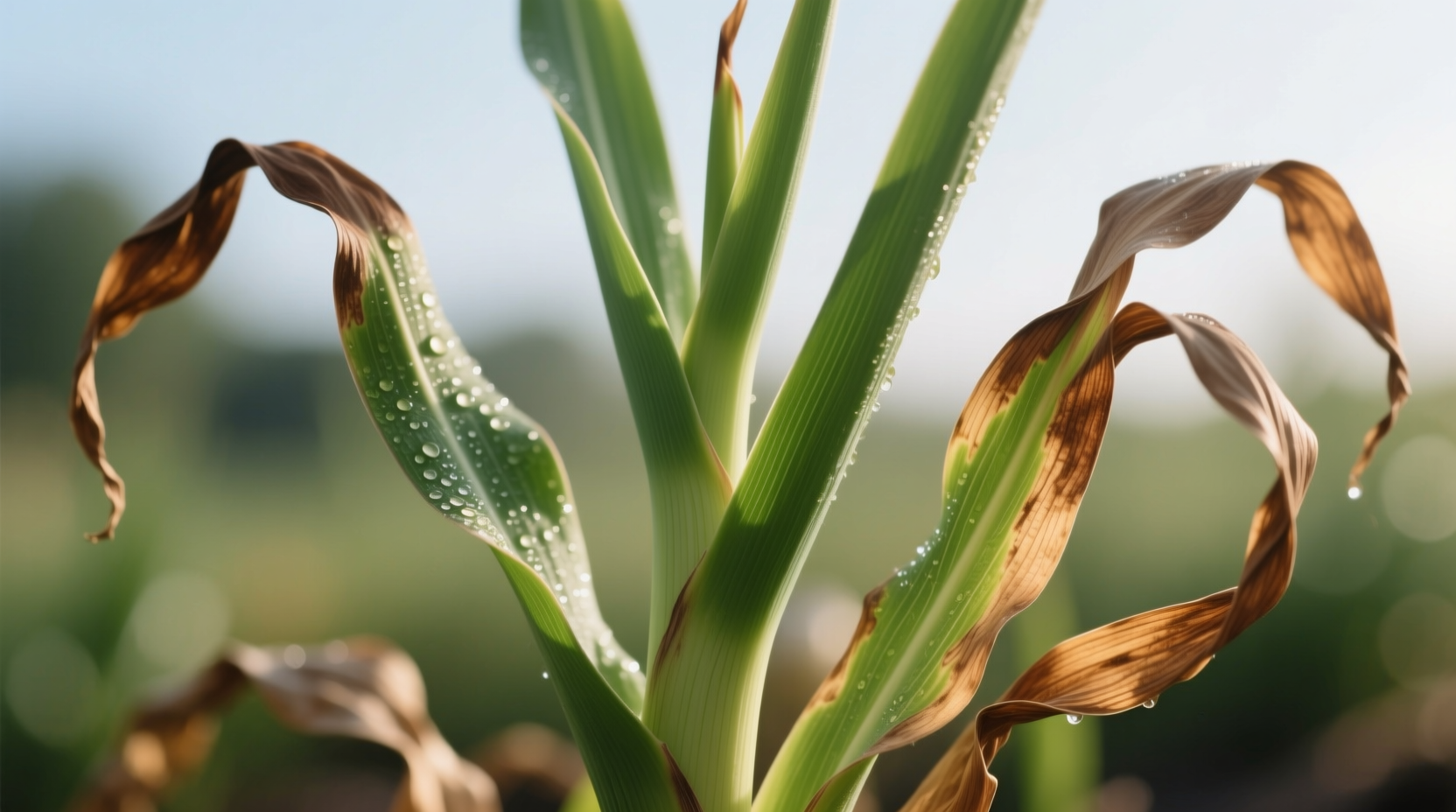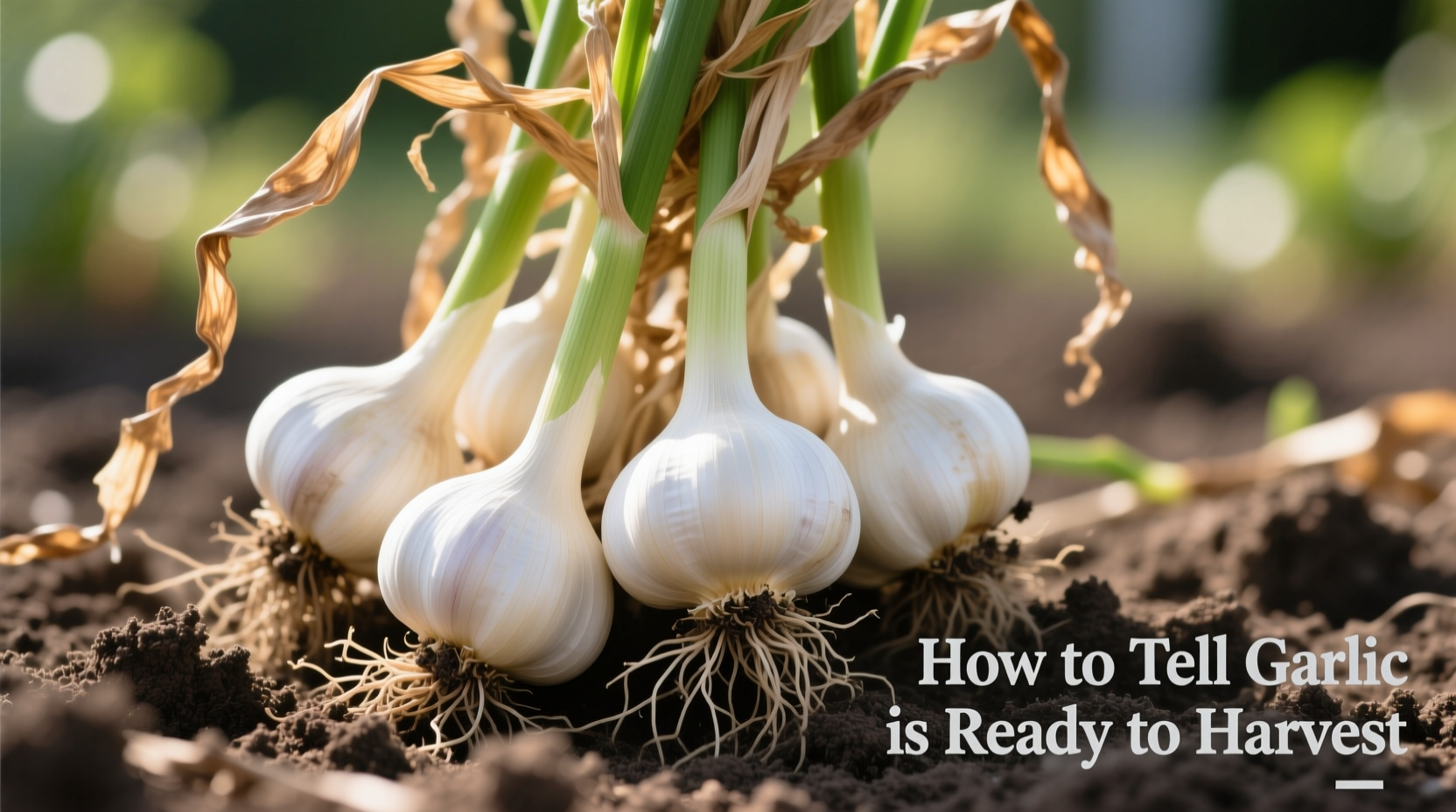Knowing exactly how can you tell when garlic is ready to harvest makes the difference between perfect bulbs and disappointing crops. Get this timing wrong, and you'll face cloves that won't separate properly, bulbs that lack storage potential, or cloves that have already started growing in the ground. This guide delivers the precise visual and physical indicators you need to harvest at the perfect moment.
Understanding Garlic's Growth Cycle
Garlic follows a predictable growth pattern that determines harvest timing. After planting cloves in fall or early spring, garlic develops roots followed by green shoots. The critical phase begins when the plant shifts energy from leaf production to bulb formation. This transition creates the visual cues you'll use to determine harvest readiness.
| Garlic Growth Stage | Timeline After Planting | Key Characteristics |
|---|---|---|
| Root Development | 0-6 weeks | White roots form; no visible growth above soil |
| Leaf Production | 6 weeks-4 months | Multiple green leaves emerge; rapid vertical growth |
| Bulb Formation | 4-6 months | Energy shifts to bulb development; leaves stop increasing |
| Maturation | 6-8 months | Leaves yellow/brown from tips downward; bulbs reach full size |
Primary Visual Indicators for Harvest Readiness
The most reliable method for determining when to harvest hardneck garlic involves observing leaf condition. As garlic matures, leaves naturally die back from the tips downward. When approximately half to three-quarters of the leaves have turned brown while the lower leaves remain green, your garlic has reached peak maturity.
University agricultural extensions consistently emphasize this leaf indicator. According to research from University of Minnesota Extension, "The number of green leaves remaining directly corresponds to the number of protective wrapper layers around the bulb. Fewer green leaves mean fewer wrapper layers, which reduces storage life."

Physical Checks: Beyond Leaf Color
While leaf color provides the primary signal, experienced growers perform additional checks to confirm how to know when garlic bulbs are mature:
The Neck Test
Gently feel the stem just above the bulb. When garlic approaches harvest readiness, this area softens significantly. A firm neck indicates the plant is still actively growing, while a noticeably soft or mushy neck suggests you've waited too long.
The Wrapper Inspection
Carefully dig around one bulb to examine the wrapper layers without fully extracting it. Ideal harvest timing shows:
- Wrapper remains intact but begins drying
- Individual cloves visible through wrapper
- No splitting of wrapper layers
Splitting wrappers indicate over-maturity, which leads to poor storage quality. The Oregon State University Extension notes that "once wrapper layers split, bulbs become vulnerable to disease and moisture loss, reducing storage life by weeks or months."
Regional Timing Considerations
Garlic harvest timing by zone varies significantly based on climate and planting schedule:
- Northern zones (3-5): Late June to early August
- Middle zones (6-7): Mid-June to late July
- Southern zones (8-10): May to early June
Hardneck varieties typically mature 2-4 weeks before softneck types. In warmer climates where garlic is planted in winter, harvest occurs earlier than in colder regions with fall-planted crops. Always prioritize visual indicators over calendar dates, as unusual weather patterns can accelerate or delay maturity.
Avoiding Common Harvest Mistakes
Many gardeners struggle with signs garlic is ready to pick because they rely on single indicators rather than multiple confirmation points. Consider these frequent errors:
Harvesting Too Early
When you pull garlic before it's mature, you'll notice:
- Small, underdeveloped bulbs
- Excessive wrapper layers that don't separate cleanly
- Difficulty separating cloves
- Reduced flavor complexity
Harvesting Too Late
Waiting past peak maturity causes:
- Split wrapper layers
- Exposed cloves vulnerable to disease
- Bulbs that have started growing new roots
- Reduced storage life (sometimes by 50% or more)
The Royal Horticultural Society emphasizes that "garlic left in the ground too long develops a tendency to 'jump' or separate into individual cloves, making storage difficult and reducing market quality."
Weather Impact on Harvest Timing
Unusual weather patterns significantly affect best time to harvest garlic in summer. During extended dry periods, garlic may mature faster than usual. Conversely, cool, wet summers delay maturity. Always check your plants weekly during the expected harvest window rather than relying solely on calendar dates.
If heavy rain is forecasted near your expected harvest date, consider harvesting early. Saturated soil increases the risk of bulb rot, and wet conditions during harvest complicates the crucial curing process. The University of California Cooperative Extension advises that "garlic harvested from wet soil requires significantly longer curing time and has higher spoilage rates than garlic harvested from dry soil."
What to Do Immediately After Harvest
Proper post-harvest handling preserves your carefully timed harvest. After removing garlic from the ground:
- Gently brush off excess soil (don't wash)
- Leave stems and roots intact for curing
- Hang in a dark, well-ventilated area for 2-3 weeks
- Trim stems to 1 inch and roots to ¼ inch after curing
- Store in mesh bags in a cool, dry location
Remember that harvest timing directly impacts storage potential. Garlic harvested at peak maturity typically stores 6-8 months under proper conditions, while improperly timed harvests may last only 1-2 months.
Special Considerations for Different Garlic Types
While the basic harvest indicators apply to all garlic, specific varieties have unique considerations:
- Hardneck varieties: Harvest scapes 2-3 weeks before bulb harvest to redirect energy
- Softneck varieties: Tend to mature later with more wrapper layers
- Elephant garlic: Requires longer growing season; harvest when 40-50% of leaves brown
Understanding these subtle differences helps you determine how to know when garlic bulbs are mature for your specific variety.
Final Verification Before Harvest
When you suspect your garlic is ready, perform this three-point verification:
- Check leaf condition (50-75% brown)
- Feel neck softness (noticeably soft but not mushy)
- Inspect wrapper on one test bulb (intact but drying)
If all three indicators align, harvest within 3-5 days for optimal results. This comprehensive approach ensures you never miss the narrow harvest window that determines your garlic's quality and storage life.
How many leaves should be brown before harvesting garlic?
Harvest garlic when approximately 50-75% of the leaves have turned brown while the lower leaves remain green. This typically means 4-6 green leaves remaining on hardneck varieties and 6-8 on softneck types. The number of green leaves directly corresponds to the number of protective wrapper layers around the bulb.
Can you harvest garlic too early?
Yes, harvesting garlic too early produces smaller bulbs with excessive wrapper layers that don't separate cleanly. Early-harvested garlic also has reduced flavor complexity and shorter storage life. Wait until at least half the leaves show browning for optimal bulb development and storage potential.
What happens if you leave garlic in the ground too long?
Leaving garlic in the ground too long causes wrapper layers to split, exposing cloves to disease and moisture loss. Bulbs may begin growing new roots or separating into individual cloves ('jumping'), significantly reducing storage life. In severe cases, bulbs deteriorate in the soil, becoming soft and unusable.
Should you water garlic before harvesting?
No, stop watering garlic 1-2 weeks before expected harvest. Dry soil conditions help initiate the natural maturation process and make harvesting easier. Harvesting from wet soil increases the risk of bulb rot and complicates the curing process, reducing storage life.
How do you check garlic maturity without pulling the whole plant?
Gently dig around one plant to expose the bulb without removing it. Check for plump cloves, intact but drying wrapper layers, and visible clove definition. Also feel the stem just above the bulb - it should be noticeably soft but not mushy. This test plant approach lets you verify maturity without harvesting your entire crop prematurely.











 浙公网安备
33010002000092号
浙公网安备
33010002000092号 浙B2-20120091-4
浙B2-20120091-4